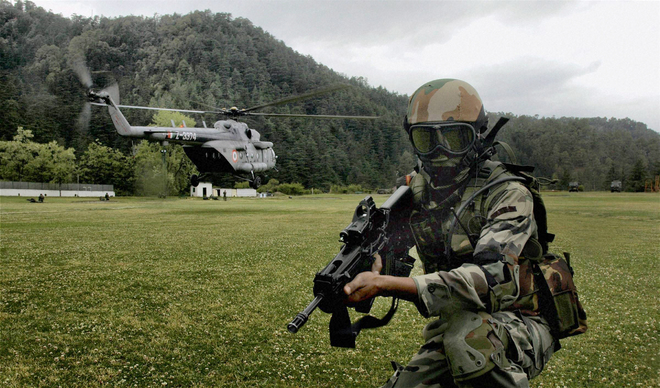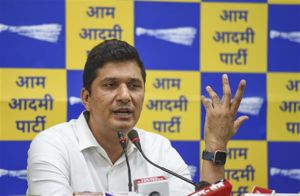
The Army has seen a major structural reorganisation, force accretion and massive influx of technology in the past 50 years. PTI
Vijay Mohan
Tribune News Service
Chandigarh, August 29
Fifty years after India and Pakistan fought a war on the western frontier along the banks of the Chenab, Beas and Sutlej, there has been a change in the doctrinal approach towards war waging and wherewithal to meet operational needs.
“The biggest change in strategy is the shift towards the conduct of proactive operations,” said Lt General KJ Singh, General Officer Commanding-in-Chief, Western Command.
“Over the past years, we have seen major structural reorganisation, force accretion and a massive influx of technology,” he said.
The 1965 Indo-Pak War was primarily fought by the Western Command, then headquartered at Shimla and headed by Lt Gen Harbaksh Singh. Its territorial jurisdiction then included Jammu and Kashmir, Punjab, Himachal Pradesh and parts of Rajasthan up to Bikaner.
In 1984, the Northern Command was created with the responsibility of looking after Jammu and Kashmir, reducing the area of responsibility (AOR) of the Western Commanded from Bikaner to Pathankot. The year 2005 again saw reorganisation with the South Western Command being created and the AOR of Western Command being redefined from Fazilka in southern Punjab to south of Akhnoor in Jammu and Kashmir.
“Like in all wars, here too we learnt not only from our actions but also from the mistakes of the enemy,” Lt Gen KJ Singh said. “Changing commanders mid-way during a battle like the Pakistani did in Chhamb was a blunder. We realised that technology and superior equipment alone is not enough. They have to be exploited and this is where training and innovations count and that is how the Pakistani Patton tanks lost out. We also suffered from inadequate intelligence and some missed opportunities,” he said.
“A significant development is our ability to undertake varied night operations and carry out all-weather surveillance and recce, which was not there earlier,” he said.
In the 1965 war, our troops advanced during day time, but had to fall back after dark. Over the years, a complex network of defence structures and obstacles has come up on either side of the border, posing a challenge to offensive operations in the region. While the primary task of the Western Command remains the defence of the Western heartland and to take the battle into enemy territory, the biggest challenge that has emerged is to assist the security forces and the civilian establishment to counter terror threats along the Jammu-Samba-Kathua axis – the area that had witnessed the Pakistani offensive in 1965.



























